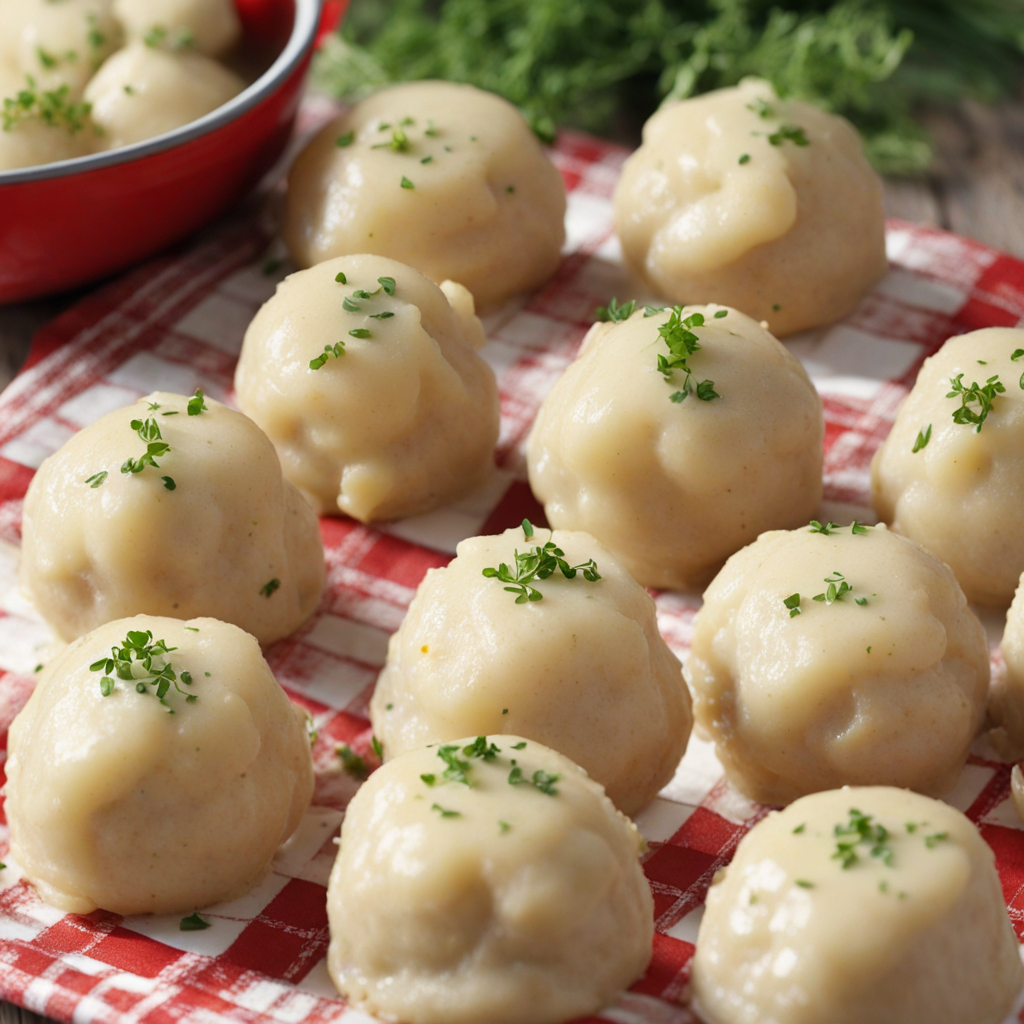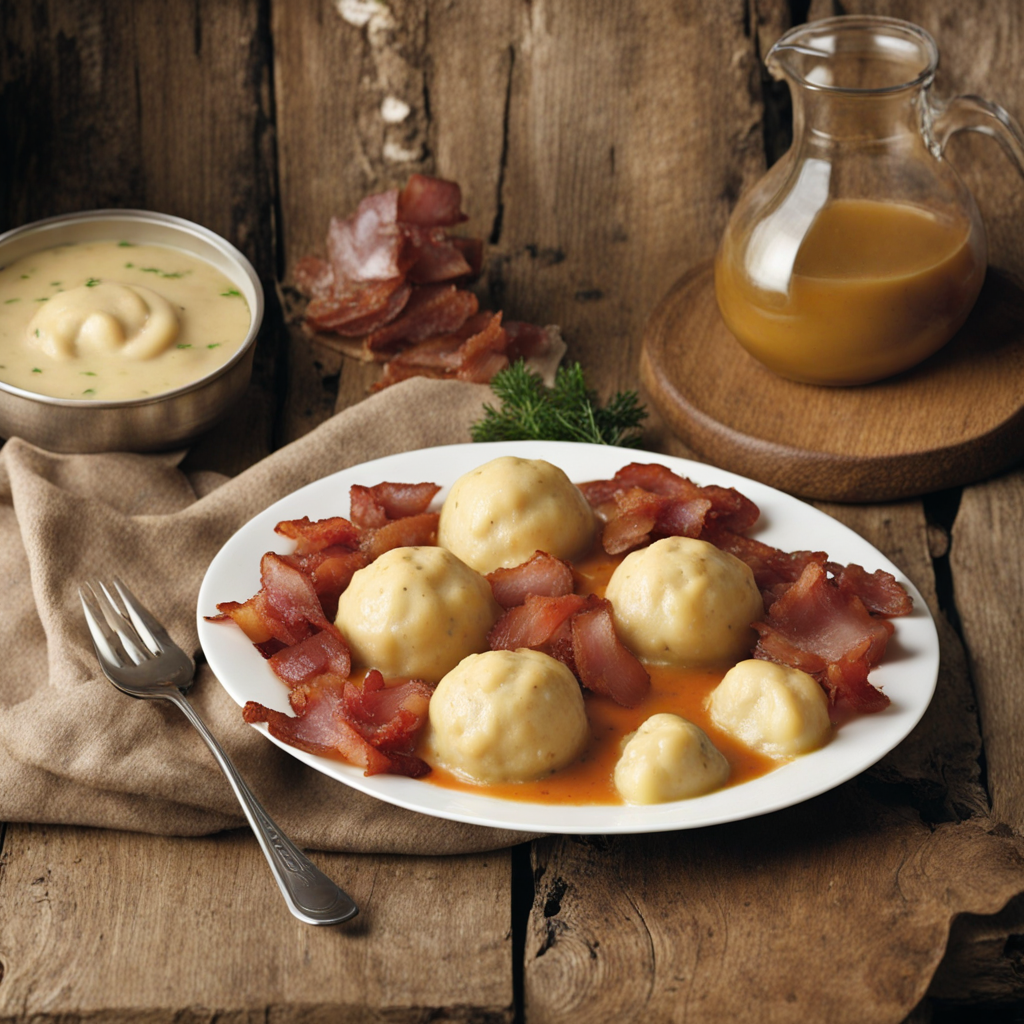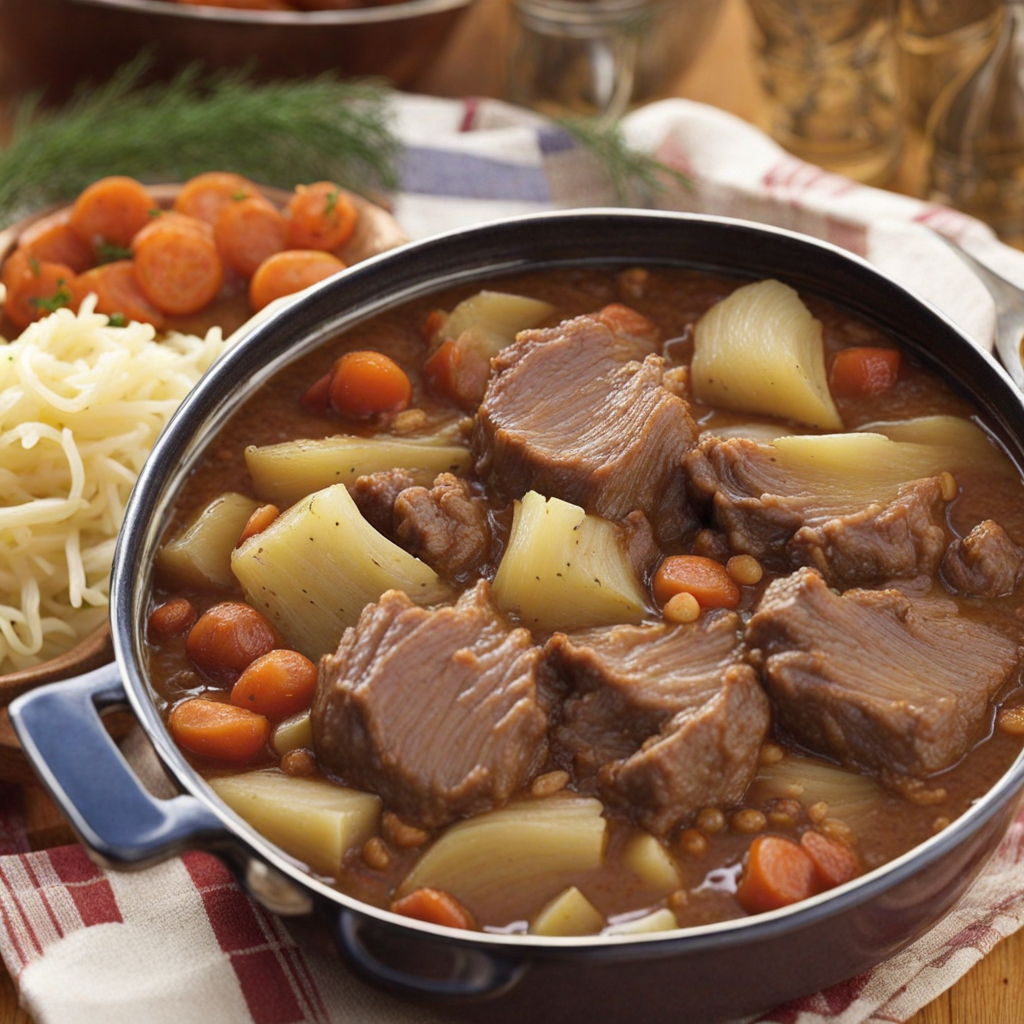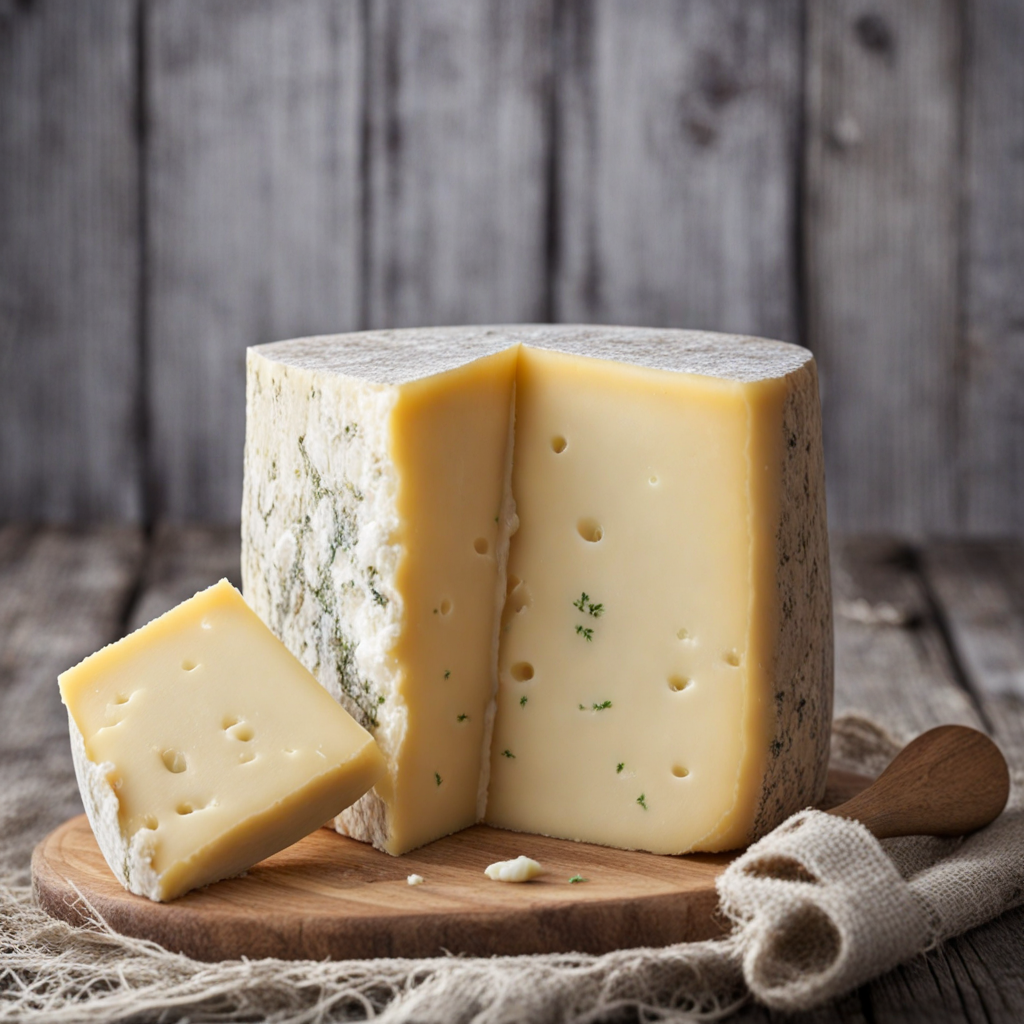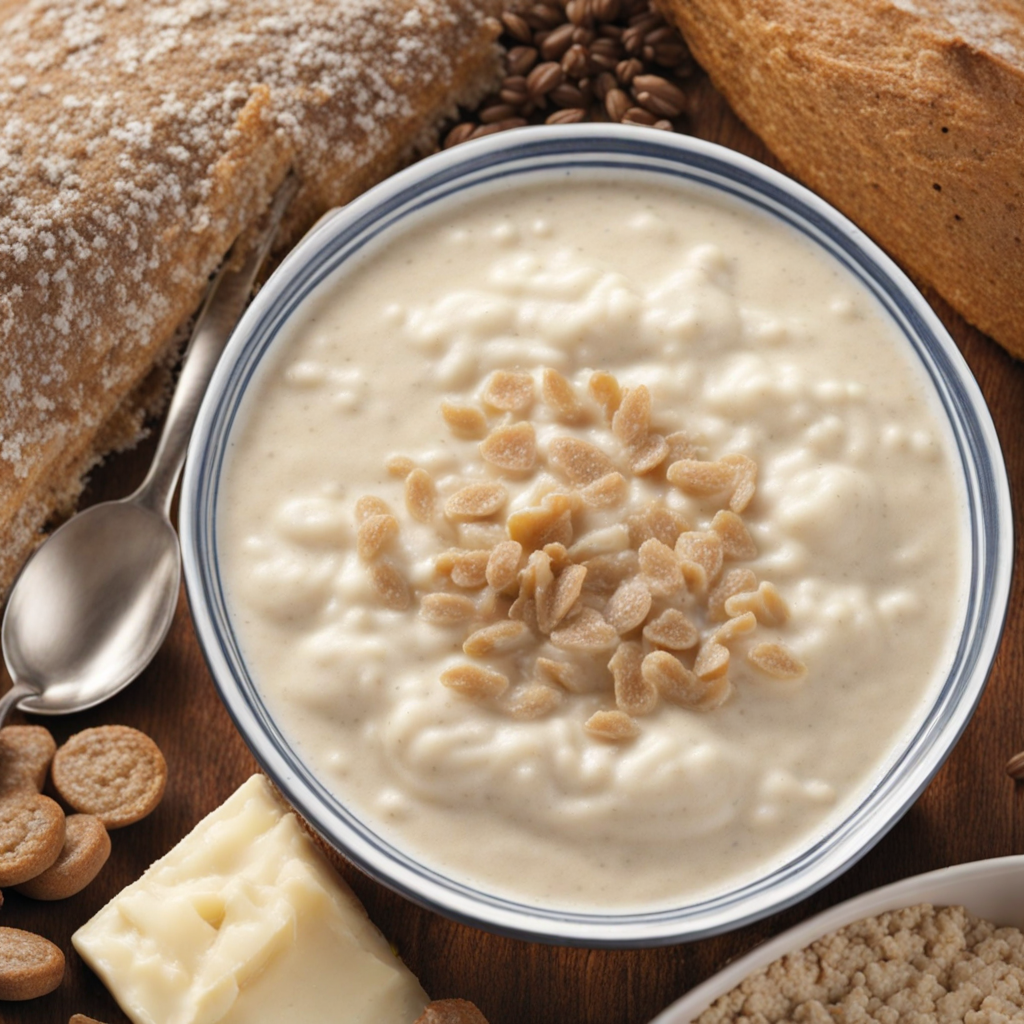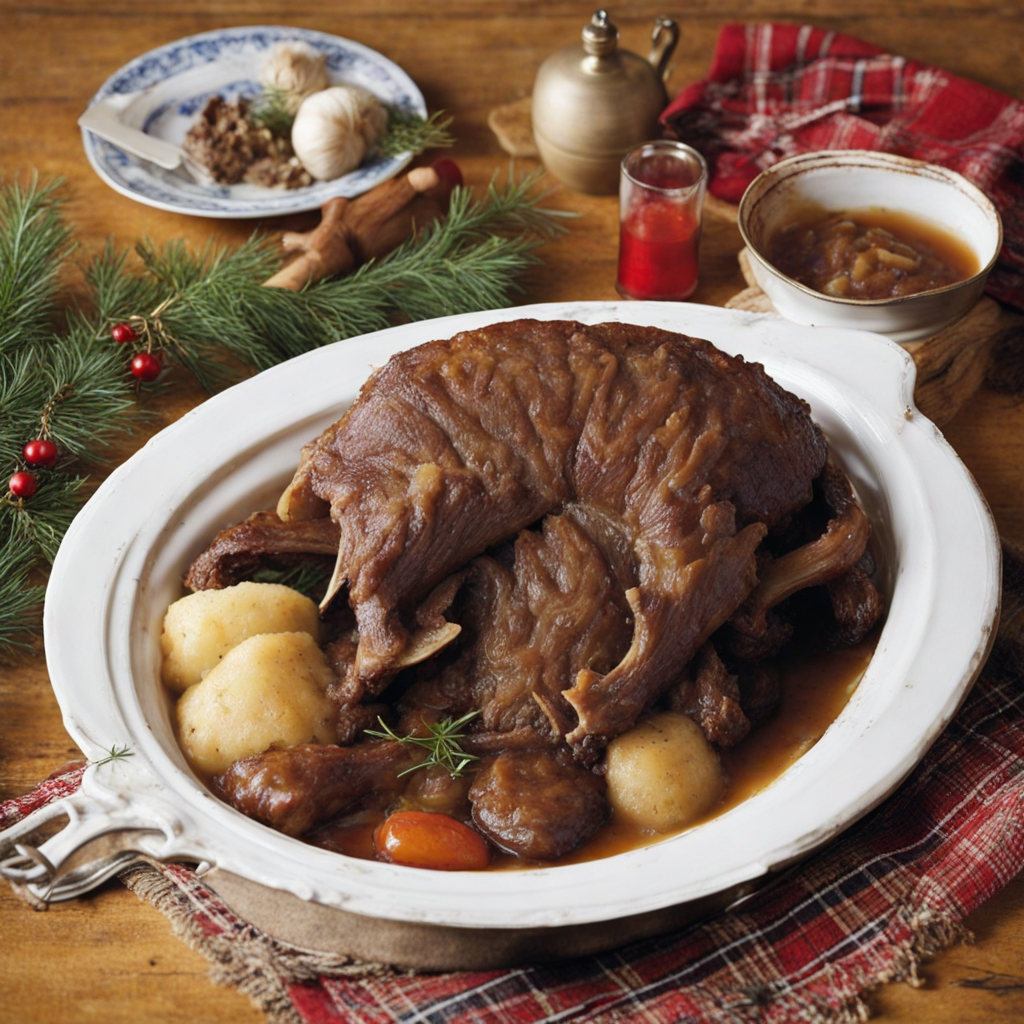Raspeball
Raspeball, also known as raspeballer or potetball, is a traditional Norwegian dish that embodies the rustic charm of Nordic cuisine. These dumplings are primarily made from potatoes, which are grated and mixed with flour, salt, and sometimes a bit of baking powder to achieve the perfect texture. The dough is then shaped into balls, typically the size of a golf ball, and boiled until they become tender and slightly chewy. The simplicity of the ingredients highlights the natural flavors of the potatoes, making raspeball a comforting and hearty meal that reflects the essence of Norwegian home cooking. The dish is often served with a variety of accompaniments, enhancing its flavor profile. Commonly, raspeball is paired with a rich meat stew, such as lamb or pork, which infuses the dumpling with a savory essence. Additionally, it's typical to see raspeball served alongside vegetables, like carrots or rutabaga, and a drizzle of brown gravy that adds depth to each bite. The combination of textures—from the soft, pillowy dumplings to the tender meat—creates a satisfying dining experience that warms the soul, especially during the cold northern winters. Raspeball is more than just a meal; it is a cultural experience that connects you to Norwegian traditions. Each family may have its own variation of the recipe, often passed down through generations, making every plate a unique representation of regional flavors and personal touches. Whether enjoyed at a family gathering or a local festival, raspeball invites you to savor the simplicity and heartiness of Norwegian gastronomy, making it a must-try for anyone eager to explore new tastes.
How It Became This Dish
The History of Raspeball: A Culinary Treasure from Norway Introduction Raspeball, also known as raspeballer or potetball, is a traditional Norwegian dish that showcases the country’s rich agricultural heritage and its connection to the land. This hearty dumpling, made primarily from potatoes, holds a special place in the hearts and homes of Norwegians, symbolizing comfort, communal dining, and a profound connection to the cultural identity of the nation. The history of raspeball spans centuries, reflecting the evolution of food practices in Norway and the interplay between tradition and innovation. Origins of Raspeball While the exact origins of raspeball are difficult to pinpoint, it is believed to have emerged in the rural regions of Norway during the 17th century. Potatoes, introduced to Norway from South America in the late 18th century, quickly became a staple in the Norwegian diet, particularly in the more remote areas where grain farming was challenging. The dish is made from grated raw potatoes mixed with flour and sometimes incorporating leftover meats or other fillings, showcasing the ingenuity of rural communities in utilizing available ingredients. The name “raspeball” comes from the Norwegian word “raspe,” which translates to “grate.” This reflects the primary preparation method where raw potatoes are grated before being mixed with flour to form a dough. As with many traditional dishes, variations of raspeball can be found throughout different regions of Norway, influenced by local ingredients and culinary practices. Cultural Significance Raspeball is more than just a dish; it embodies the spirit of Norwegian culture and tradition. In a country characterized by harsh winters and rugged landscapes, food has always played a crucial role in survival and community bonding. Raspeball is often prepared during family gatherings, celebrations, and festive occasions, reinforcing social ties and the importance of sharing meals with loved ones. In Norwegian folklore, food is imbued with symbolic meanings, and raspeball is no exception. The dish represents sustenance, warmth, and the care of family. During the long winter months, hearty meals were essential for both physical and emotional well-being. Serving raspeball, often accompanied by rich gravies or sauces, evokes a sense of home and nostalgia, reminding those who partake of their roots and traditions. Development Over Time As Norway evolved through the centuries, so too did raspeball. In the early 20th century, as urbanization began to take hold and people migrated to cities for work, traditional foods like raspeball adapted to modern lifestyles. The original recipes were modified to accommodate the needs of a new generation, leading to variations that included different fillings, such as meats, vegetables, or even cheeses. The post-World War II era saw a resurgence of interest in traditional Norwegian cuisine, spurred by a growing movement to preserve cultural identity amid rapid globalization. Chefs and home cooks alike began to explore the rich history of Norwegian food, leading to a renaissance of interest in dishes like raspeball. This revival was not only about nostalgia but also about sustainability and a return to local, seasonal ingredients. In contemporary Norway, raspeball has found its place on both rustic dining tables and in modern restaurants. Chefs have innovated with the dish, experimenting with flavors and techniques while honoring the traditional methods of preparation. Variations include the use of different types of potatoes, creative fillings, and even gluten-free options, ensuring that raspeball remains relevant in a changing culinary landscape. Regional Variations Raspeball is not a monolithic dish; it varies significantly across Norway’s diverse regions. In Trøndelag, the heart of raspeball culture, the dumplings are typically made with a mix of grated and boiled potatoes, resulting in a denser texture. They are often served with a rich meat sauce or broth, accompanied by side dishes like boiled carrots or sauerkraut. In western Norway, raspeball may be known as "potetball," and it often features smoked meats or sausages as fillings. In contrast, in the northern regions, variations can include the use of reindeer meat or other local game, reflecting the indigenous Sámi influences on the cuisine. Additionally, the dish has been adapted by Norwegian immigrants in the United States, who have preserved its essence while incorporating local ingredients. This cross-cultural exchange has led to interesting innovations, such as the addition of spices and herbs that are not traditionally used in Norway. Raspeball in Modern Cuisine Today, raspeball is celebrated not only as a staple of Norwegian home cooking but also as a dish that represents the broader Nordic food movement. Chefs are increasingly looking to traditional dishes for inspiration, emphasizing local and sustainable ingredients. This has led to a renewed appreciation for the artisanal techniques used in preparing raspeball, with a focus on hand-grated potatoes and time-honored cooking methods. Raspeball is often featured at food festivals, showcasing the culinary heritage of Norway. It has also made its way into cookbooks and online culinary platforms, where food enthusiasts share their interpretations and variations of this beloved dish. The interest in raspeball reflects a growing trend towards rediscovering and celebrating traditional foods, promoting a sense of community and cultural pride. Conclusion Raspeball is a culinary gem that encapsulates the history, culture, and resilience of Norway. From its humble origins in rural kitchens to its modern-day interpretations in restaurants, this dish has endured through generations, adapting to the changing tides of society while retaining its core essence. As Norwegians continue to honor their culinary heritage, raspeball stands as a delicious reminder of the importance of food in forging connections, preserving traditions, and celebrating the rich tapestry of Norwegian life. Whether served at a festive gathering or enjoyed on a chilly winter evening, raspeball remains a cherished symbol of home and heritage, inviting all to partake in its warm embrace.
You may like
Discover local flavors from Norway


